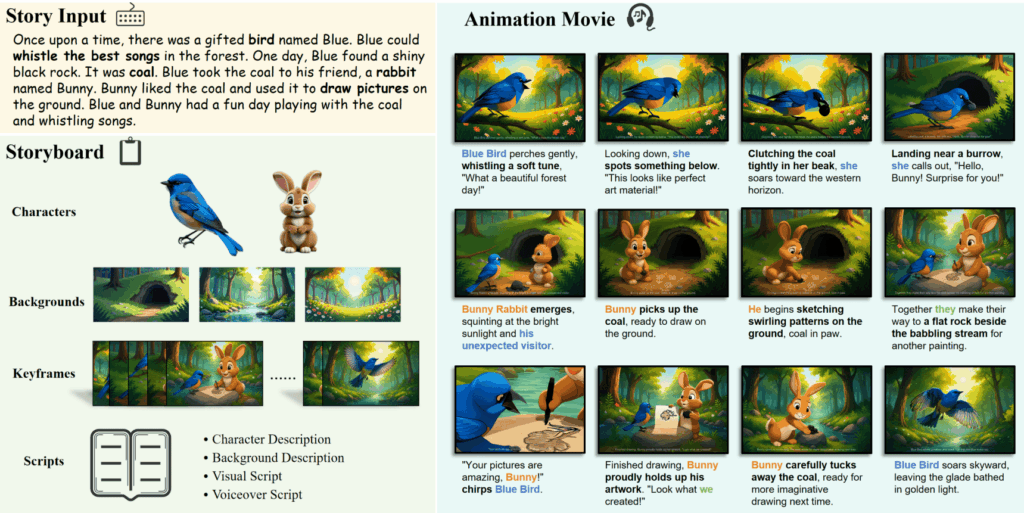
Text-to-image diffusion models have revolutionized the way AI generates images from textual descriptions, enabling stunning visual creativity. However, these models often come with hefty computational costs, limiting their efficiency and accessibility. A recent research paper introduces an innovative technique called Token Pruning that streamlines these models by intelligently reducing the number of tokens processed during image generation—without sacrificing quality. In this blog post, we’ll explore how token pruning works, why it matters, and what benefits it brings to the future of AI-powered image synthesis.
The Challenge: Balancing Quality and Efficiency in Diffusion Models
Diffusion models generate images by gradually transforming random noise into coherent visuals, guided by text prompts. The process involves complex neural networks that interpret the text and progressively refine the image. While powerful, these models face two main challenges:
- High Computational Demand: Processing every token (word or subword) in a text prompt through multiple layers requires significant memory and compute resources.
- Latency Issues: The extensive computation leads to slower image generation, which can hinder real-time applications or deployment on resource-constrained devices.
Reducing the number of tokens processed could speed up inference, but naively dropping tokens risks losing important semantic information, degrading image quality.
What Is Token Pruning?
Token pruning is a technique that dynamically identifies and removes less important tokens during the forward pass of the diffusion model. Instead of treating all tokens equally, the model learns to focus on the most relevant parts of the text prompt at each stage of image generation.
Key ideas behind token pruning include:
- Dynamic Selection: Tokens are pruned based on their contribution to the current generation step, allowing the model to adaptively focus on critical information.
- Layer-wise Pruning: Pruning decisions occur at multiple layers, progressively reducing token count as the model refines the image.
- Preserving Semantics: The method ensures that essential semantic content is retained, maintaining image fidelity.
How Does Token Pruning Work?
The proposed approach integrates token pruning into the diffusion model’s architecture with the following components:
- Importance Scoring: At each layer, tokens are assigned importance scores reflecting their relevance to the current generation task.
- Pruning Mechanism: Tokens with low scores are pruned, reducing the computational load for subsequent layers.
- Token Reweighting: Remaining tokens are reweighted to compensate for the pruned ones, preserving overall semantic balance.
- End-to-End Training: The entire system is trained jointly, enabling the model to learn effective pruning strategies without manual intervention.
Why Is This Breakthrough Important?
Token pruning offers several compelling advantages for text-to-image diffusion models:
- Reduced Computation: By processing fewer tokens, the model requires less memory and compute power.
- Faster Inference: Pruning accelerates image generation, making diffusion models more practical for real-time or interactive applications.
- Maintained Quality: Despite pruning, the approach preserves or even improves image quality by focusing on the most informative tokens.
- Scalability: The method can be applied to various diffusion architectures and text encoders, enhancing flexibility.
Real-World Benefits and Applications
The efficiency gains from token pruning unlock new possibilities for AI-generated imagery:
- Creative Tools: Artists and designers can enjoy faster iterations when generating visuals from text prompts.
- Mobile and Edge Devices: Lightweight models enable deployment on smartphones and other devices with limited resources.
- Interactive Experiences: Games, virtual reality, and augmented reality applications can integrate real-time text-to-image generation.
- Cost Efficiency: Reduced computational demands lower cloud infrastructure costs for AI service providers.
Summary of Key Contributions
- Introduced a novel token pruning technique tailored for text-to-image diffusion models.
- Developed a dynamic, layer-wise pruning strategy based on learned importance scores.
- Demonstrated significant computational savings and faster inference without compromising image quality.
- Validated the approach on standard benchmarks, showing competitive or superior performance.
Looking Ahead: The Future of Efficient Image Generation
Token pruning marks a significant step toward making powerful diffusion models more accessible and practical. As AI continues to evolve, combining such efficiency techniques with advances in model architecture and training will further democratize creative AI tools.
Future research directions may include:
- Extending pruning methods to other modalities like video or 3D generation.
- Exploring adaptive pruning thresholds based on user preferences or hardware constraints.
- Integrating token pruning with other compression and acceleration techniques.
Final Thoughts
The ability to generate high-quality images from text prompts is transforming creativity and communication. By intelligently pruning tokens, this new method makes diffusion models faster and more efficient—without sacrificing the rich detail and nuance that make AI-generated art so compelling.
Whether you’re an AI researcher, developer, or enthusiast, token pruning offers exciting insights into how we can build smarter, leaner models that bring cutting-edge technology closer to everyday use.
Stay tuned for more updates on innovations that push the boundaries of AI creativity and efficiency!
Paper: https://arxiv.org/pdf/2506.10540
If you enjoyed this deep dive into token pruning and diffusion models, follow our blog for more accessible explanations of the latest AI research breakthroughs.
Добавить комментарий